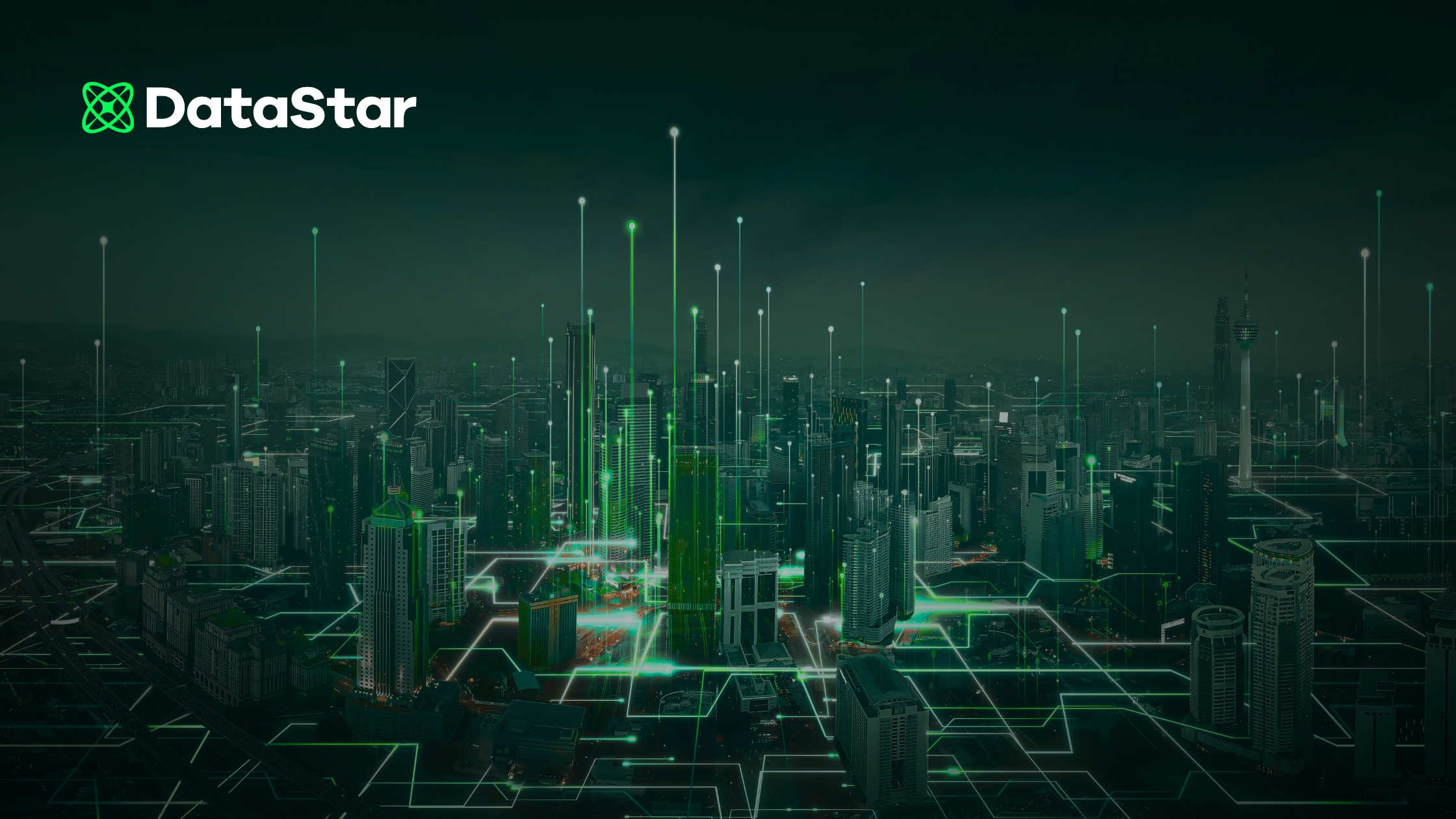
Your supply chain strategy is central to your success. Both supply chain design and supply chain planning fall within ‘supply chain management’. Both concepts, with differing focuses and objectives, are essential for the successful operation of a supply chain.
Published by
Max Mascarenhas
Published on
July 6, 2023





JTVCYXV0aG9yX2luZm8lNUQ=It’s harder than ever to improve supply chain KPIs, despite advances in supply chain planning efficiency. Why?Because supply chain planning only addresses the supply chain you have today. With supply chain design, you have the freedom to experiment and ask, "what if?" to change your situation--enabling significant improvements in cost, service, and risk.Read on as we explore the unique qualities of supply chain design and supply chain planning and how these two critical technologies coexist in winning businesses.
Supply chain design is the process of modeling your current and future-state supply chain and allows companies to create scenarios to analyze the trade-off between financials, service, and risk. The main goal of supply chain design is to create a cost-effective and flexible supply chain responsive to changing market conditions. Supply chain design involves making decisions about the structure and policies of your supply chain, including:
Supply chain planning refers to forecasting demand, determining required inventory levels, and creating a production plan to meet customer needs. The main goal of supply chain planning is to ensure that the right products are available for customers in the right quantities at the right time, in the right place.
You can’t plan your way out of a bad supply chain design. Planning helps you reach the “efficiency curve” of your current supply chain. Supply chain design shifts the entire curve.
While supply chain design and planning are two factors working in tandem to create your supply chain management strategy, each is unique. Below we explore the distinctions between supply chain design and supply chain planning.
Supply chain design and supply chain planning operate on individual and varied timelines:
Related: Industry Guide to Supply Chain Network Design
Each process requires and prioritizes varying levels of detail:
Supply chain design and planning require different skill sets and team talents:
Both supply chain design and supply chain planning are critical for the success of your supply chain. Design ensures that your existing and future supply chain is architected for sustainable success, while supply chain planning optimizes your supply chain in the short to medium term. A well-rounded approach to supply chain management incorporates both supply chain design and planning, balancing the needs of both processes to create a supply chain optimized for your uniquely defined goals.
While design and planning focus on different aspects of the supply chain and have distinct objectives, both are essential for a successful supply chain strategy. Here are areas where the two disciplines overlap as they both aim to improve the efficiency, effectiveness and overall performance of the supply chain.
Both supply chain design and planning leverage and optimize the supply chain network to reduce costs and increase efficiency. This includes optimizing transportation routes, choosing the most cost-effective modes of transportation, and utilizing the optimal facilities and warehouses. Both processes focus on optimizing the network but from different time horizons and operational approaches.
Inventory management is crucial to supply chain design and supply chain planning. Both optimize inventory levels to reduce costs, improve customer satisfaction, and minimize the risk of stockouts.
JTNDcCUzRSUzQ2RpdiUyMGNsYXNzJTNEJTIyaHMtY3RhLWVtYmVkJTIwaHMtY3RhLXNpbXBsZS1wbGFjZWhvbGRlciUyMGhzLWN0YS1lbWJlZC0xNDA2NTUxODYwODElMjIlMEElMjAlMjBzdHlsZSUzRCUyMm1heC13aWR0aCUzQTEwMCUyNSUzQiUyMG1heC1oZWlnaHQlM0ExMDAlMjUlM0IlMjB3aWR0aCUzQTgwMHB4JTNCaGVpZ2h0JTNBMjAwcHglMjIlMjBkYXRhLWh1YnNwb3Qtd3JhcHBlci1jdGEtaWQlM0QlMjIxNDA2NTUxODYwODElMjIlM0UlMEElMjAlMjAlM0NhJTIwaHJlZiUzRCUyMmh0dHBzJTNBJTJGJTJGY3RhLXNlcnZpY2UtY21zMi5odWJzcG90LmNvbSUyRndlYi1pbnRlcmFjdGl2ZXMlMkZwdWJsaWMlMkZ2MSUyRnRyYWNrJTJGcmVkaXJlY3QlM0ZlbmNyeXB0ZWRQYXlsb2FkJTNEQVZ4aWdMTEwzSTgwQ1VpeDdQUmM2WTI5TXR2SFVBMU9zNnhTcmF5UDQzNFVMSEdZNlRzM0QwJTI1MkZXTlFjTUUlMjUyRnFzV2NEeHlCMlJNYzR6YVFPM2lSOTI0N3Jsc2lJMVlNakZyVXBNek1zVndhcjFTJTI1MkZPUkhCQ2VYbVhEa3drOGQ4TGZXeTloU3FkV2RaNWtiaENFM1hRTyUyNTJGenZheSUyNTJGZFozTTk2TVF2Q2E2YUh3JTI1MkZYdzZ4MXJYRDdHdXRSS3Zzb2Zta1IlMjUyQiUyNTJCd1lFaFYlMjUyRkp5cXNWcDlibHV3TDdsOHptdmtPMHRFSnZJWXJDUndxYWNsU0NHeUtZb0N2dUFEWXFTVnBMRUZENHBoaXFZd3Bkb0h2YWVUQVc3VVdCdnZwME1nV2I1ZHpjUlZKME90ZzNXU3hmbGxTWjdYciUyNTJGeCUyNTJCeldiUSUyNTNEJTI1M0QlMjZ3ZWJJbnRlcmFjdGl2ZUNvbnRlbnRJZCUzRDE0MDY1NTE4NjA4MSUyNnBvcnRhbElkJTNENzEyNTU5MiUyMiUyMHRhcmdldCUzRCUyMl9ibGFuayUyMiUyMHJlbCUzRCUyMm5vb3BlbmVyJTIyJTIwY3Jvc3NvcmlnaW4lM0QlMjJhbm9ueW1vdXMlMjIlM0UlMEElMjAlMjAlMjAlMjAlM0NpbWclMjBhbHQlM0QlMjI0JTIwV2F5cyUyMHRvJTIwQ3J1c2glMjBTZXJ2aWNlJTIwRmFpbHVyZXMlMjBhbmQlMjBJbXByb3ZlJTIwUHJvZml0YWJpbGl0eSUyMHdpdGglMjBJbnZlbnRvcnklMjBTdHJhdGVneSUyMERlc2lnbiUyMEd1aWRlJTIyJTIwbG9hZGluZyUzRCUyMmxhenklMjIlMjBzcmMlM0QlMjJodHRwcyUzQSUyRiUyRm5vLWNhY2hlLmh1YnNwb3QuY29tJTJGY3RhJTJGZGVmYXVsdCUyRjcxMjU1OTIlMkZpbnRlcmFjdGl2ZS0xNDA2NTUxODYwODEucG5nJTIyJTIwc3R5bGUlM0QlMjJoZWlnaHQlM0ElMjAxMDAlMjUlM0IlMjB3aWR0aCUzQSUyMDEwMCUyNSUzQiUyMG9iamVjdC1maXQlM0ElMjBmaWxsJTIyJTBBJTIwJTIwJTIwJTIwJTIwJTIwb25lcnJvciUzRCUyMnRoaXMuc3R5bGUuZGlzcGxheSUzRCUyN25vbmUlMjclMjIlMjAlMkYlM0UlMEElMjAlMjAlM0MlMkZhJTNFJTBBJTNDJTJGZGl2JTNFJTBBJTNDJTJGcCUzRQ==
Design and planning leverage partnerships between key stakeholders in the supply chain, including collaboration with suppliers, manufacturers, distributors, and retailers. By working together, these stakeholders can identify areas for improvement and find solutions that benefit the extended supply chain.
Data and analytics help organizations make informed decisions in design and planning, including analyzing demand patterns, production costs, transportation costs, and inventory levels. Data analytics helps identify inefficiencies and find solutions to improve the performance of the supply chain.
Design and planning seek continuous improvement as an ongoing objective. Companies must use design to regularly review and update their supply chain strategies to keep pace with changing market conditions, customer demand, and technological advancements to provide the planning process with optimal operating conditions.
Use Optilogic’s design platform to answer the “what-if” questions and scenarios within your end-to-end supply chain. Our models help you test your systems, refine your strategies, and test the feasibility and impact of proposed design changes. Design a supply chain that amplifies what your planning system can do. Optilogic prioritizes a single objective: supply chain design. Because competing priorities don’t dilute our efforts, we boast a superior supply chain design platform that will work for your organization. Create your free account today and see what a future-proof design platform can accomplish for your organization. JTNDcCUzRSUzQ3AlM0UlM0NkaXYlMjBjbGFzcyUzRCUyMmhzLWN0YS1lbWJlZCUyMGhzLWN0YS1zaW1wbGUtcGxhY2Vob2xkZXIlMjBocy1jdGEtZW1iZWQtMTQyMDIwMjI0NTY3JTIyJTBBJTIwJTIwc3R5bGUlM0QlMjJtYXgtd2lkdGglM0ExMDAlMjUlM0IlMjBtYXgtaGVpZ2h0JTNBMTAwJTI1JTNCJTIwd2lkdGglM0E4MDBweCUzQmhlaWdodCUzQTQ1MHB4JTIyJTIwZGF0YS1odWJzcG90LXdyYXBwZXItY3RhLWlkJTNEJTIyMTQyMDIwMjI0NTY3JTIyJTNFJTBBJTIwJTIwJTNDYSUyMGhyZWYlM0QlMjJodHRwcyUzQSUyRiUyRmN0YS1zZXJ2aWNlLWNtczIuaHVic3BvdC5jb20lMkZ3ZWItaW50ZXJhY3RpdmVzJTJGcHVibGljJTJGdjElMkZ0cmFjayUyRnJlZGlyZWN0JTNGZW5jcnlwdGVkUGF5bG9hZCUzREFWeGlnTExOT0E5emlOWDV0S3Z3RFBMYWd2NU5GRHd1U0hBR0dhaTAxUkx6eDJSbFloYWx1QklyODYyWGUwSWtDaDFOZEZpd0VINlJGalNjblpWNlUlMjUyQnZWVGxwV21ZRUJqVW1CZm9oWjYlMjUyRkkyY0lFJTI1MkJZT3NjTE5JUnY1cHVkN1FyTERWT253M2tqc0xRT3VIeXAzMTdjR2NheXNuWmFNUkJ1ZkN1eDNUTHNRZjgwNyUyNTJCMWtLTWxjR2RSbnozb0olMjUyRmhQWXBHcSUyNndlYkludGVyYWN0aXZlQ29udGVudElkJTNEMTQyMDIwMjI0NTY3JTI2cG9ydGFsSWQlM0Q3MTI1NTkyJTIyJTIwdGFyZ2V0JTNEJTIyX2JsYW5rJTIyJTIwcmVsJTNEJTIybm9vcGVuZXIlMjIlMjBjcm9zc29yaWdpbiUzRCUyMmFub255bW91cyUyMiUzRSUwQSUyMCUyMCUyMCUyMCUzQ2ltZyUyMGFsdCUzRCUyMkNyZWF0ZSUyMEElMjBGcmVlJTIwQ29zbWljJTIwRnJvZyUyMEFjY291bnQlMjIlMjBsb2FkaW5nJTNEJTIybGF6eSUyMiUyMHNyYyUzRCUyMmh0dHBzJTNBJTJGJTJGbm8tY2FjaGUuaHVic3BvdC5jb20lMkZjdGElMkZkZWZhdWx0JTJGNzEyNTU5MiUyRmludGVyYWN0aXZlLTE0MjAyMDIyNDU2Ny5wbmclMjIlMjBzdHlsZSUzRCUyMmhlaWdodCUzQSUyMDEwMCUyNSUzQiUyMHdpZHRoJTNBJTIwMTAwJTI1JTNCJTIwb2JqZWN0LWZpdCUzQSUyMGZpbGwlMjIlMEElMjAlMjAlMjAlMjAlMjAlMjBvbmVycm9yJTNEJTIydGhpcy5zdHlsZS5kaXNwbGF5JTNEJTI3bm9uZSUyNyUyMiUyMCUyRiUzRSUwQSUyMCUyMCUzQyUyRmElM0UlMEElM0MlMkZkaXYlM0UlMEElM0MlMkZwJTNFJTNDJTJGcCUzRQ==
JTVCYXV0aG9yX2luZm8lNUQ=It’s harder than ever to improve supply chain KPIs, despite advances in supply chain planning efficiency. Why?Because supply chain planning only addresses the supply chain you have today. With supply chain design, you have the freedom to experiment and ask, "what if?" to change your situation--enabling significant improvements in cost, service, and risk.Read on as we explore the unique qualities of supply chain design and supply chain planning and how these two critical technologies coexist in winning businesses.
Supply chain design is the process of modeling your current and future-state supply chain and allows companies to create scenarios to analyze the trade-off between financials, service, and risk. The main goal of supply chain design is to create a cost-effective and flexible supply chain responsive to changing market conditions. Supply chain design involves making decisions about the structure and policies of your supply chain, including:
Supply chain planning refers to forecasting demand, determining required inventory levels, and creating a production plan to meet customer needs. The main goal of supply chain planning is to ensure that the right products are available for customers in the right quantities at the right time, in the right place.
You can’t plan your way out of a bad supply chain design. Planning helps you reach the “efficiency curve” of your current supply chain. Supply chain design shifts the entire curve.
While supply chain design and planning are two factors working in tandem to create your supply chain management strategy, each is unique. Below we explore the distinctions between supply chain design and supply chain planning.
Supply chain design and supply chain planning operate on individual and varied timelines:
Related: Industry Guide to Supply Chain Network Design
Each process requires and prioritizes varying levels of detail:
Supply chain design and planning require different skill sets and team talents:
Both supply chain design and supply chain planning are critical for the success of your supply chain. Design ensures that your existing and future supply chain is architected for sustainable success, while supply chain planning optimizes your supply chain in the short to medium term. A well-rounded approach to supply chain management incorporates both supply chain design and planning, balancing the needs of both processes to create a supply chain optimized for your uniquely defined goals.
While design and planning focus on different aspects of the supply chain and have distinct objectives, both are essential for a successful supply chain strategy. Here are areas where the two disciplines overlap as they both aim to improve the efficiency, effectiveness and overall performance of the supply chain.
Both supply chain design and planning leverage and optimize the supply chain network to reduce costs and increase efficiency. This includes optimizing transportation routes, choosing the most cost-effective modes of transportation, and utilizing the optimal facilities and warehouses. Both processes focus on optimizing the network but from different time horizons and operational approaches.
Inventory management is crucial to supply chain design and supply chain planning. Both optimize inventory levels to reduce costs, improve customer satisfaction, and minimize the risk of stockouts.
JTNDcCUzRSUzQ2RpdiUyMGNsYXNzJTNEJTIyaHMtY3RhLWVtYmVkJTIwaHMtY3RhLXNpbXBsZS1wbGFjZWhvbGRlciUyMGhzLWN0YS1lbWJlZC0xNDA2NTUxODYwODElMjIlMEElMjAlMjBzdHlsZSUzRCUyMm1heC13aWR0aCUzQTEwMCUyNSUzQiUyMG1heC1oZWlnaHQlM0ExMDAlMjUlM0IlMjB3aWR0aCUzQTgwMHB4JTNCaGVpZ2h0JTNBMjAwcHglMjIlMjBkYXRhLWh1YnNwb3Qtd3JhcHBlci1jdGEtaWQlM0QlMjIxNDA2NTUxODYwODElMjIlM0UlMEElMjAlMjAlM0NhJTIwaHJlZiUzRCUyMmh0dHBzJTNBJTJGJTJGY3RhLXNlcnZpY2UtY21zMi5odWJzcG90LmNvbSUyRndlYi1pbnRlcmFjdGl2ZXMlMkZwdWJsaWMlMkZ2MSUyRnRyYWNrJTJGcmVkaXJlY3QlM0ZlbmNyeXB0ZWRQYXlsb2FkJTNEQVZ4aWdMTEwzSTgwQ1VpeDdQUmM2WTI5TXR2SFVBMU9zNnhTcmF5UDQzNFVMSEdZNlRzM0QwJTI1MkZXTlFjTUUlMjUyRnFzV2NEeHlCMlJNYzR6YVFPM2lSOTI0N3Jsc2lJMVlNakZyVXBNek1zVndhcjFTJTI1MkZPUkhCQ2VYbVhEa3drOGQ4TGZXeTloU3FkV2RaNWtiaENFM1hRTyUyNTJGenZheSUyNTJGZFozTTk2TVF2Q2E2YUh3JTI1MkZYdzZ4MXJYRDdHdXRSS3Zzb2Zta1IlMjUyQiUyNTJCd1lFaFYlMjUyRkp5cXNWcDlibHV3TDdsOHptdmtPMHRFSnZJWXJDUndxYWNsU0NHeUtZb0N2dUFEWXFTVnBMRUZENHBoaXFZd3Bkb0h2YWVUQVc3VVdCdnZwME1nV2I1ZHpjUlZKME90ZzNXU3hmbGxTWjdYciUyNTJGeCUyNTJCeldiUSUyNTNEJTI1M0QlMjZ3ZWJJbnRlcmFjdGl2ZUNvbnRlbnRJZCUzRDE0MDY1NTE4NjA4MSUyNnBvcnRhbElkJTNENzEyNTU5MiUyMiUyMHRhcmdldCUzRCUyMl9ibGFuayUyMiUyMHJlbCUzRCUyMm5vb3BlbmVyJTIyJTIwY3Jvc3NvcmlnaW4lM0QlMjJhbm9ueW1vdXMlMjIlM0UlMEElMjAlMjAlMjAlMjAlM0NpbWclMjBhbHQlM0QlMjI0JTIwV2F5cyUyMHRvJTIwQ3J1c2glMjBTZXJ2aWNlJTIwRmFpbHVyZXMlMjBhbmQlMjBJbXByb3ZlJTIwUHJvZml0YWJpbGl0eSUyMHdpdGglMjBJbnZlbnRvcnklMjBTdHJhdGVneSUyMERlc2lnbiUyMEd1aWRlJTIyJTIwbG9hZGluZyUzRCUyMmxhenklMjIlMjBzcmMlM0QlMjJodHRwcyUzQSUyRiUyRm5vLWNhY2hlLmh1YnNwb3QuY29tJTJGY3RhJTJGZGVmYXVsdCUyRjcxMjU1OTIlMkZpbnRlcmFjdGl2ZS0xNDA2NTUxODYwODEucG5nJTIyJTIwc3R5bGUlM0QlMjJoZWlnaHQlM0ElMjAxMDAlMjUlM0IlMjB3aWR0aCUzQSUyMDEwMCUyNSUzQiUyMG9iamVjdC1maXQlM0ElMjBmaWxsJTIyJTBBJTIwJTIwJTIwJTIwJTIwJTIwb25lcnJvciUzRCUyMnRoaXMuc3R5bGUuZGlzcGxheSUzRCUyN25vbmUlMjclMjIlMjAlMkYlM0UlMEElMjAlMjAlM0MlMkZhJTNFJTBBJTNDJTJGZGl2JTNFJTBBJTNDJTJGcCUzRQ==
Design and planning leverage partnerships between key stakeholders in the supply chain, including collaboration with suppliers, manufacturers, distributors, and retailers. By working together, these stakeholders can identify areas for improvement and find solutions that benefit the extended supply chain.
Data and analytics help organizations make informed decisions in design and planning, including analyzing demand patterns, production costs, transportation costs, and inventory levels. Data analytics helps identify inefficiencies and find solutions to improve the performance of the supply chain.
Design and planning seek continuous improvement as an ongoing objective. Companies must use design to regularly review and update their supply chain strategies to keep pace with changing market conditions, customer demand, and technological advancements to provide the planning process with optimal operating conditions.
Use Optilogic’s design platform to answer the “what-if” questions and scenarios within your end-to-end supply chain. Our models help you test your systems, refine your strategies, and test the feasibility and impact of proposed design changes. Design a supply chain that amplifies what your planning system can do. Optilogic prioritizes a single objective: supply chain design. Because competing priorities don’t dilute our efforts, we boast a superior supply chain design platform that will work for your organization. Create your free account today and see what a future-proof design platform can accomplish for your organization. JTNDcCUzRSUzQ3AlM0UlM0NkaXYlMjBjbGFzcyUzRCUyMmhzLWN0YS1lbWJlZCUyMGhzLWN0YS1zaW1wbGUtcGxhY2Vob2xkZXIlMjBocy1jdGEtZW1iZWQtMTQyMDIwMjI0NTY3JTIyJTBBJTIwJTIwc3R5bGUlM0QlMjJtYXgtd2lkdGglM0ExMDAlMjUlM0IlMjBtYXgtaGVpZ2h0JTNBMTAwJTI1JTNCJTIwd2lkdGglM0E4MDBweCUzQmhlaWdodCUzQTQ1MHB4JTIyJTIwZGF0YS1odWJzcG90LXdyYXBwZXItY3RhLWlkJTNEJTIyMTQyMDIwMjI0NTY3JTIyJTNFJTBBJTIwJTIwJTNDYSUyMGhyZWYlM0QlMjJodHRwcyUzQSUyRiUyRmN0YS1zZXJ2aWNlLWNtczIuaHVic3BvdC5jb20lMkZ3ZWItaW50ZXJhY3RpdmVzJTJGcHVibGljJTJGdjElMkZ0cmFjayUyRnJlZGlyZWN0JTNGZW5jcnlwdGVkUGF5bG9hZCUzREFWeGlnTExOT0E5emlOWDV0S3Z3RFBMYWd2NU5GRHd1U0hBR0dhaTAxUkx6eDJSbFloYWx1QklyODYyWGUwSWtDaDFOZEZpd0VINlJGalNjblpWNlUlMjUyQnZWVGxwV21ZRUJqVW1CZm9oWjYlMjUyRkkyY0lFJTI1MkJZT3NjTE5JUnY1cHVkN1FyTERWT253M2tqc0xRT3VIeXAzMTdjR2NheXNuWmFNUkJ1ZkN1eDNUTHNRZjgwNyUyNTJCMWtLTWxjR2RSbnozb0olMjUyRmhQWXBHcSUyNndlYkludGVyYWN0aXZlQ29udGVudElkJTNEMTQyMDIwMjI0NTY3JTI2cG9ydGFsSWQlM0Q3MTI1NTkyJTIyJTIwdGFyZ2V0JTNEJTIyX2JsYW5rJTIyJTIwcmVsJTNEJTIybm9vcGVuZXIlMjIlMjBjcm9zc29yaWdpbiUzRCUyMmFub255bW91cyUyMiUzRSUwQSUyMCUyMCUyMCUyMCUzQ2ltZyUyMGFsdCUzRCUyMkNyZWF0ZSUyMEElMjBGcmVlJTIwQ29zbWljJTIwRnJvZyUyMEFjY291bnQlMjIlMjBsb2FkaW5nJTNEJTIybGF6eSUyMiUyMHNyYyUzRCUyMmh0dHBzJTNBJTJGJTJGbm8tY2FjaGUuaHVic3BvdC5jb20lMkZjdGElMkZkZWZhdWx0JTJGNzEyNTU5MiUyRmludGVyYWN0aXZlLTE0MjAyMDIyNDU2Ny5wbmclMjIlMjBzdHlsZSUzRCUyMmhlaWdodCUzQSUyMDEwMCUyNSUzQiUyMHdpZHRoJTNBJTIwMTAwJTI1JTNCJTIwb2JqZWN0LWZpdCUzQSUyMGZpbGwlMjIlMEElMjAlMjAlMjAlMjAlMjAlMjBvbmVycm9yJTNEJTIydGhpcy5zdHlsZS5kaXNwbGF5JTNEJTI3bm9uZSUyNyUyMiUyMCUyRiUzRSUwQSUyMCUyMCUzQyUyRmElM0UlMEElM0MlMkZkaXYlM0UlMEElM0MlMkZwJTNFJTNDJTJGcCUzRQ==
Fill out the form to unlock the full content

.png)

.png)